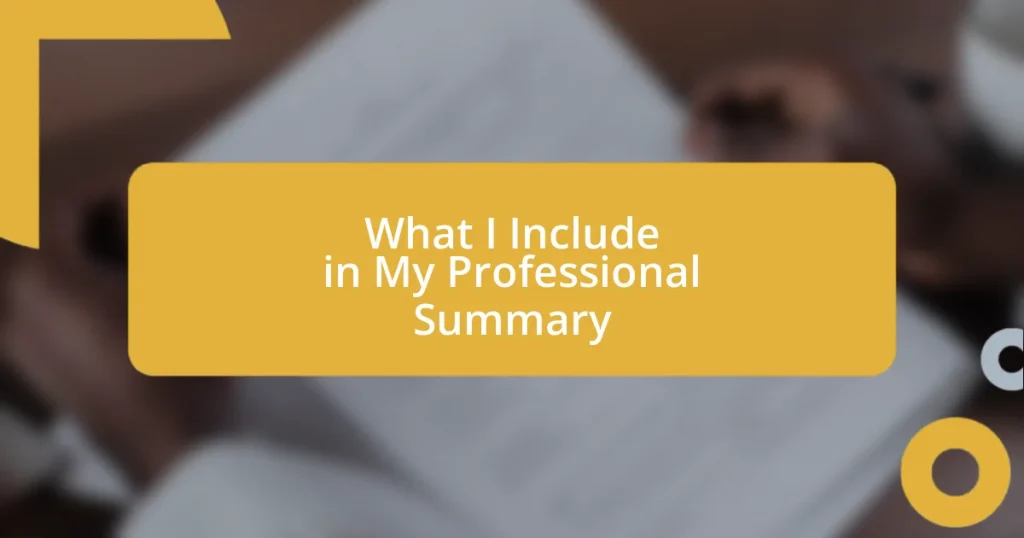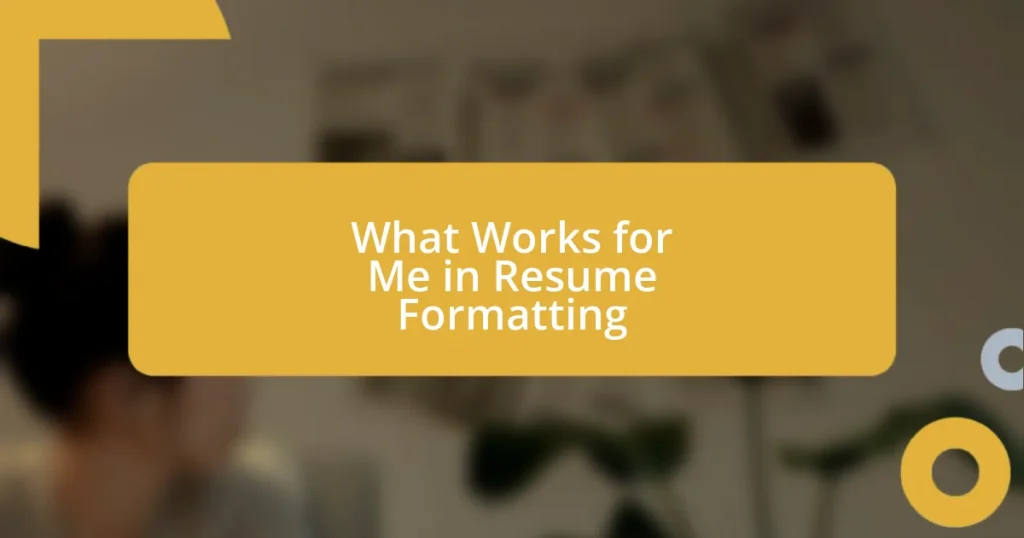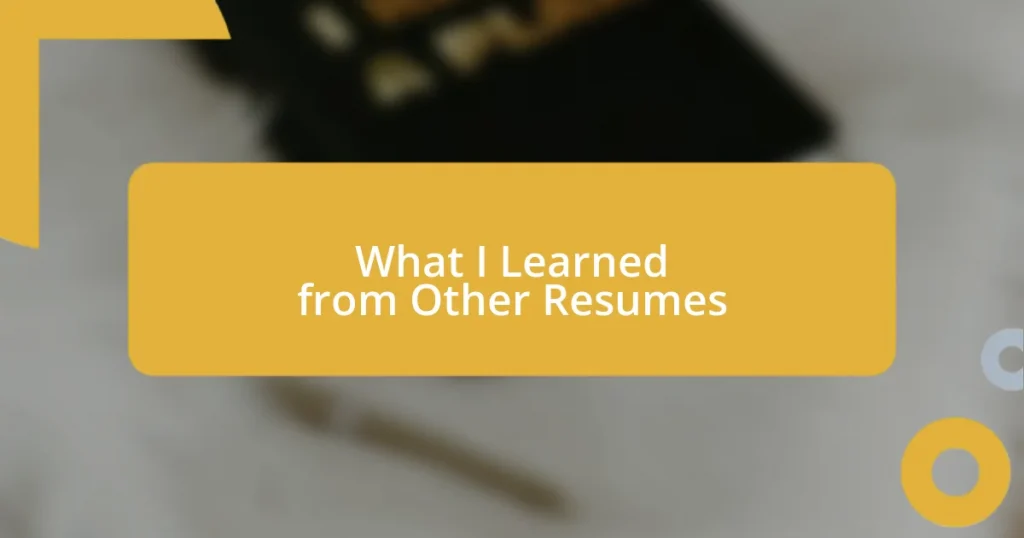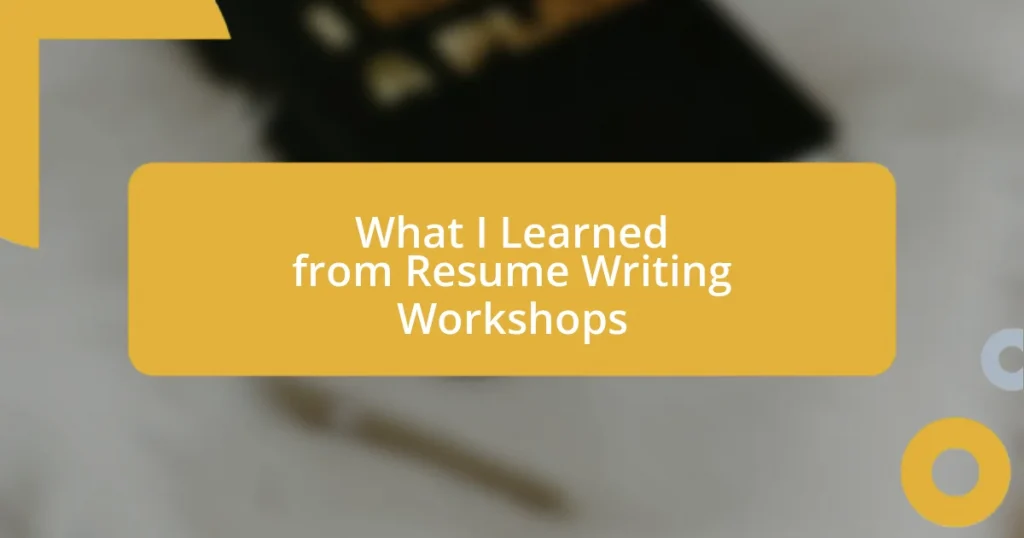Key takeaways:
- A professional summary should be concise and impactful, highlighting unique strengths, skills, and quantifiable achievements to stand out to recruiters.
- Incorporating specific examples of work experience and using action-oriented language can effectively showcase your contributions and leadership qualities.
- Regularly updating your professional summary and tailoring it to align with job applications ensures it remains relevant and reflective of your career journey.
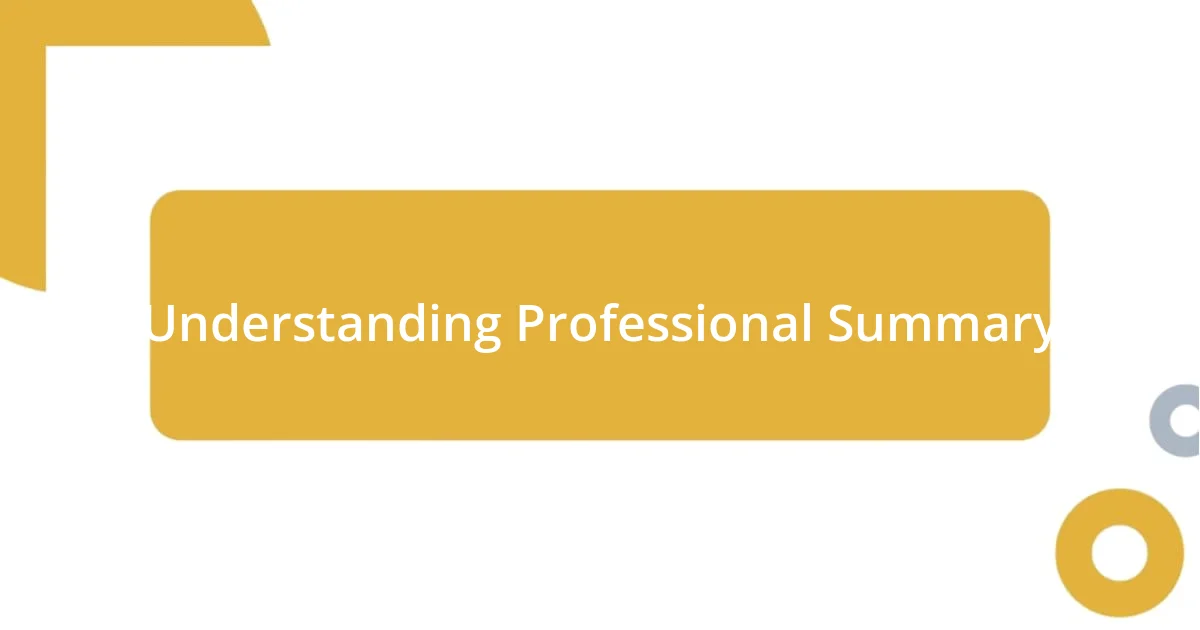
Understanding Professional Summary
A professional summary serves as your elevator pitch on paper, capturing the essence of who you are in a few concise sentences. I remember when I first started writing my own summary; it felt overwhelming trying to distill years of experience into just a few lines. But I’ve learned that this is your opportunity to highlight your unique strengths and showcase what you bring to the table.
Think about it: when a recruiter skims through countless resumes, what makes yours stand out? It’s all about clarity and impact. I once crafted a summary that included specific achievements and skills, and the response was nothing short of amazing. Adding quantifiable results can really help you connect with potential employers who are looking for proven value.
Ultimately, a well-crafted professional summary reflects not just your career journey but also your aspirations. It’s like a roadmap for your future. I’ve learned to treat it as a living document, updating it as I reach new milestones. How often do you revisit yours to ensure it aligns with your current goals?
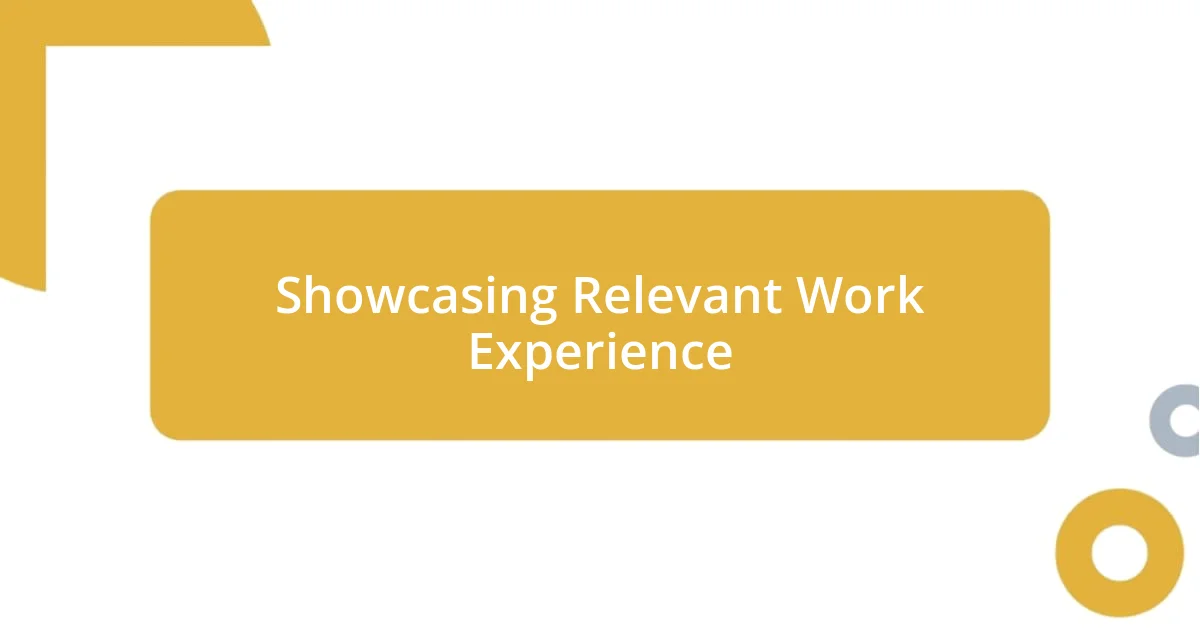
Showcasing Relevant Work Experience
When showcasing relevant work experience in your professional summary, it’s crucial to highlight not just what you did, but how you made an impact. I remember a time when I emphasized a particular role where I led a team project that increased our efficiency by 30%. That specific detail didn’t just showcase my leadership skills; it told a story of my contributions and resonated with employers hunting for results-oriented candidates.
Here are some tips to effectively present your work experience:
- Be Specific: Instead of saying “managed a team,” try “led a cross-functional team of five to complete a project ahead of schedule.”
- Quantify Achievements: Use numbers to back your claims; for instance, “grew sales by 15% within six months.”
- Tailor Content: Align your experience with the job you’re applying for—this shows you understand the employer’s needs.
- Highlight Key Skills: Identify and mention specific skills related to the position, like “proficiency in data analytics software” or “customer service excellence.”
- Use Action Verbs: Lead with strong action verbs like “created,” “developed,” or “optimized” to convey ownership and initiative.
By focusing on the specifics of your experience and its impact, you paint a clearer, more compelling picture of your professional journey.
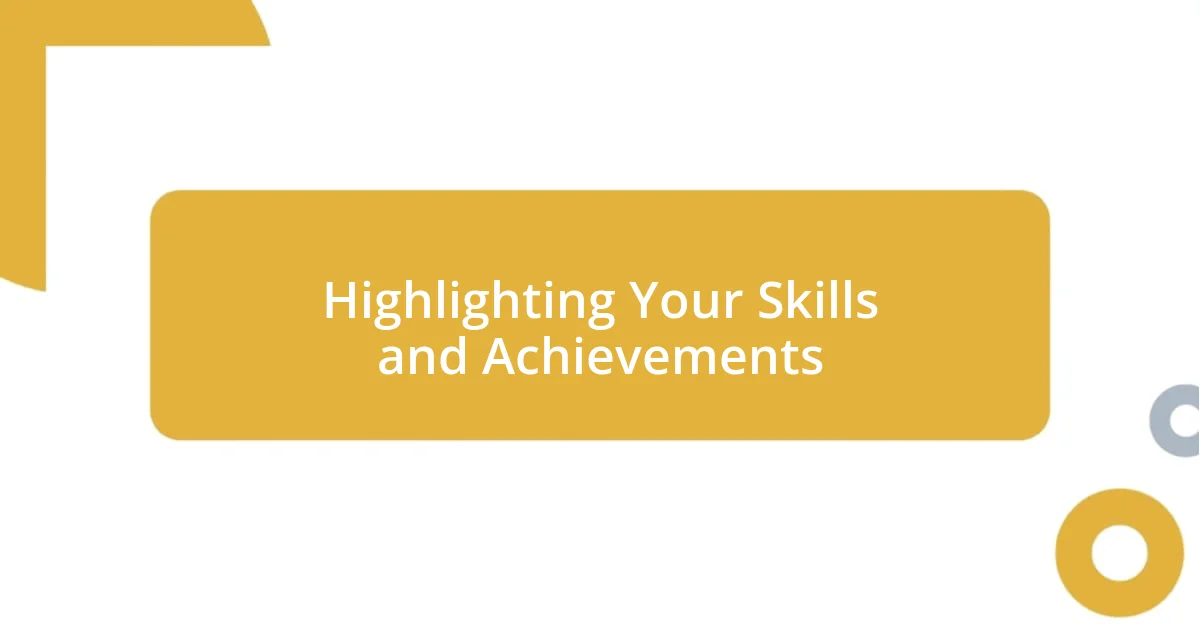
Highlighting Your Skills and Achievements
When it comes to highlighting skills and achievements, I find that clarity and specificity are essential. A while back, I had the opportunity to work on a project that not only tested my problem-solving skills but also allowed me to drive measurable outcomes. By clearly articulating my role in that success—such as “developed a new marketing strategy that increased engagement by 50%”—I showcased my skills while providing concrete evidence of my impact. It’s gratifying to remember how that small change opened up new opportunities for me.
Another approach I recommend is to reflect on the skills that you naturally excel at and how they have contributed to your achievements. I once listed my communication and negotiation skills in my summary, emphasizing a time when I resolved a complex client issue that saved the company significant dollars. Sharing these stories adds a personal touch and demonstrates how your abilities play a vital role in real-world scenarios. It allows recruiters and hiring managers to envision you and your accomplishments in action.
Incorporating quantifiable results not only illustrates your capabilities but also builds trust with potential employers. For instance, when I revamped our team’s project tracking system, it reduced delays by an impressive 40%. It’s these specific achievements that resonate and linger in the minds of recruiters. Remember, a professional summary isn’t just a list of skills; it’s a platform for telling your unique story and showcasing your journey through powerful, meaningful achievements.
| Skill | Achievement |
|---|---|
| Communication | Resolved client issues saving $50,000 |
| Leadership | Led a team that increased efficiency by 30% |
| Marketing Strategy | Increased engagement by 50% |
| Project Management | Reduced project delays by 40% |
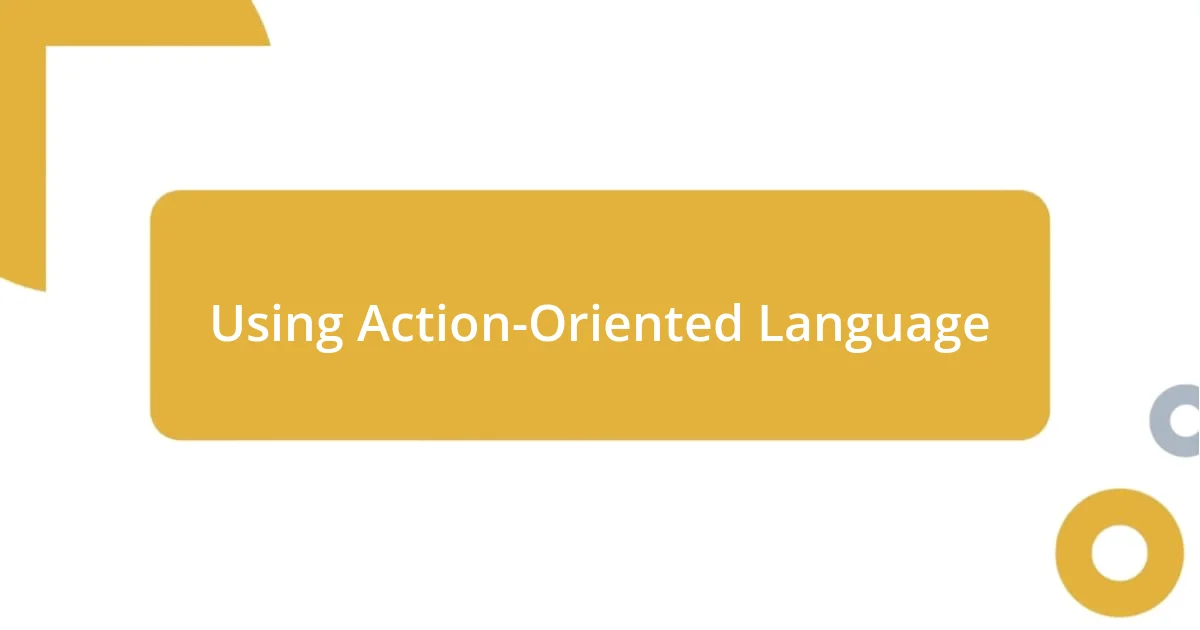
Using Action-Oriented Language
Using action-oriented language in your professional summary is vital. It’s amazing how just a single word can change the tone of your message. I once transitioned from saying “responsible for” to “spearheaded” in my summary. The difference was profound! It conveyed a sense of initiative and leadership that resonated with employers, making me stand out in a sea of candidates.
Think about how you, too, can make your language more dynamic. Have you ever considered how your choice of words can showcase not just what you’ve done, but your personal qualities as well? For instance, instead of writing “assisted the marketing team,” you might say “collaborated with the marketing team to launch a campaign that exceeded projections by 20%.” That’s a much more engaging way to demonstrate your contributions and teamwork skills.
By focusing on action verbs like “orchestrated,” “drove,” and “enhanced,” you send a clear signal about your proactive approach. I remember incorporating these kinds of verbs in my summary during my last job search, and it was refreshing to see how they transformed my narrative. It’s about owning your story and inviting the reader to see the proactive force behind your accomplishments. How can you convey that energy in your own summary?
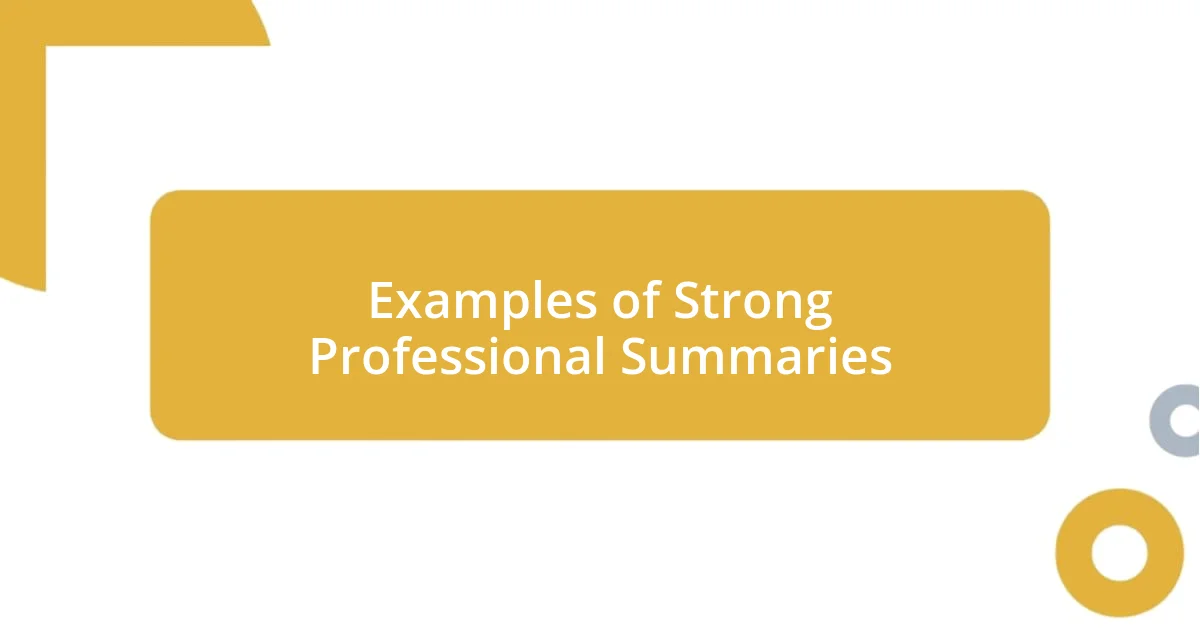
Examples of Strong Professional Summaries
When crafting a professional summary, I often find that a powerful example can make a significant impact. For instance, I once wrote a summary that addressed my ability to drive cross-departmental collaboration, stating, “Facilitated a strategic alliance that generated $1 million in new revenue.” This small but precise statement not only showcases my networking skills but also emphasizes tangible results. The connection between adherence to a clear objective and achieving success sticks with potential employers.
In another instance, I highlighted my experience in project management with a compelling summary: “Led a diverse team through a complex software rollout, achieving a 20% decrease in customer complaints within three months.” This statement conveyed not just my leadership but also the positive changes that stemmed from my oversight. Have you thought about how your unique experiences can paint a picture of your professional journey? This approach helps potential employers envision your contributions to their team in a real-world context.
Lastly, I remember concentrating on my analytical skills in a summary where I stated, “Implemented data-driven decisions that improved operational efficiency by 35%.” Such specifics resonate deeply, demonstrating my ability to leverage analytics for growth. Just like you, I want employers to see the value created through my work. Each of these examples illustrates how a well-crafted professional summary can serve as a powerful narrative, bringing your skills and achievements into sharp focus for hiring managers.










